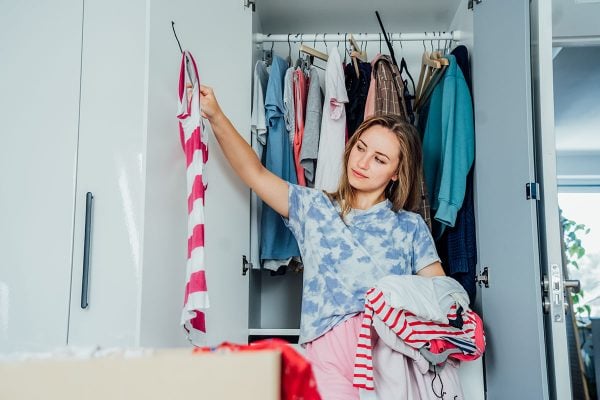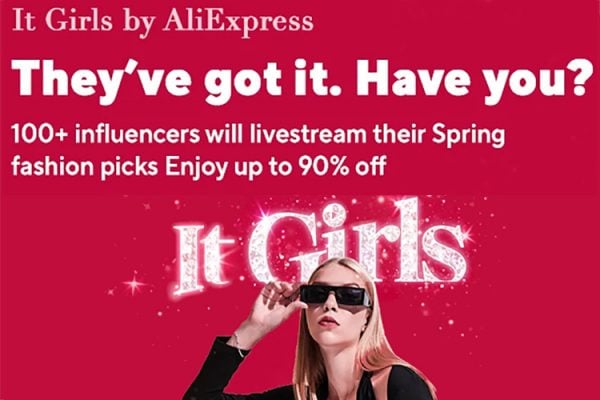Today’s guest post is from Mei Chen, Head of Fashion, Luxury and Home UK, Iberia and Northern Europe, Alibaba Group. Mei discusses how brands can get back to retailing in a post-covid world and introduces Alibaba Luxury Soho to expose brands to new consumers in China:
Luxury fashion brands are increasingly looking to engage with new consumers, including younger generations and those who might not be familiar with luxury purchases yet – marrying this to their need to effectively manage their inventory. Now more than ever, with stores closed and persistent operational challenges for warehouses while maintaining social distancing, many brands have found in the digital channels – from e-commerce to social media, a lifeline to keep their operations going and to continue maintain their consumers engaged.
Global brands are facing inventory issues
Analysts predict that retailers are sat on around £15bn worth of stock globally. Against this backdrop, it’s never been more important for brands to find new ways to reach existing customers and tap into new consumer groups. Harrods is a great example of a luxury retailer which is innovating to help solve its current inventory issues. The retailer recently announced it has taken out space in London’s Westfield shopping centre to open its first ever Harrods Outlet, to help it handle its upcoming summer sale. With inventory challenges, a slower than expected return to consumer spending in China – which accounted for 35% of luxury spending globally last year – and an expectation that global apparel sales will fall by 15.2% (equivalent to $297 billion) during 2020, it’s fair to say that many fashion brands will have to adapt and differentiate their strategy to remain competitive and relevant in the wake of Covid-19 pandemic.
A new consumer emerges from lockdown
Another thing that has become clear is that we won’t see a return to previous consumer behaviour and shopping habits, even as lockdown restrictions start to lift. As consumers become increasingly accustomed to and familiar with online shopping across almost all categories, they are starting to become more demanding of the online retail experience. This is particularly true in the luxury sector, where online shopping is set to supersede visiting physical stores for many shoppers for the foreseeable future. The central challenge that luxury brands face online of course, is how they can provide the high-end, social brand experience which they can usually deliver in-person, in-store.
We’re already seeing some innovative brand responses to this challenge. For example, Gucci launched Gucci 9 last week; a new luxury store fitted with cameras and TV style lighting in Florence, where Gucci shopping assistants can (via Zoom) show their clients around the shop virtually, talking to them about new products and answering questions in real-time.
This solution won’t be available to every brand but there are alternative options out there for retailers willing to think creatively about new ways to connect with new and existing customers.
Introducing Alibaba Luxury Soho
Alibaba Luxury Soho is designed to support luxury brands by and empowering them to uncover new consumer insights and improve their engagement with different customer segments. The platform is accessible to Chinese consumers through Alibaba Group’s B2C marketplace Taobao and Tmall.
The platform is intended as an extension of brands’ existing sales strategy, bringing extra flexibility for handling off-season or excess products online. Within Tmall’s Luxury Soho, brands have all the tools to run their own stores, with full control over pricing, product selection, strategy and look and feel.
What type of consumers can brands expect on the platform?
Luxury Soho targets younger, newer luxury consumers, such as those from China’s lower-tier cities or Gen Z shoppers who are just entering the world of luxury.
Many of the luxury consumers on Tmall were born after 1985, though we are now seeing rapid growth from younger generations born after 1995. This rising demographic is digitally savvy and more interested in buying goods online. They are price-conscious and prefer products with good value but also appreciate quality craftsmanship and premium experiences. This audience group presents a rich seam of opportunity for luxury brands looking to build a connection with a new demographic. This audience isn’t just looking to shop – they’re looking for somewhere to gather online, where they can discover new designer brands and experiences and potentially make their first luxury purchase.
How can brands engage with consumers through the platform?
Luxury Soho maximises the power of technology to deliver the engaging experience that shoppers would hope to find in store. For example, through Luxury Soho, consumers can take part in livestreams, allowing them to interact directly with Key Opinion Leaders (similar to influencers in Europe) and ask them questions about products before purchasing. Livestreaming is an incredibly powerful medium during March’s Shanghai Fashion Week alone, livestreamed fashion shows attracted more than 11 million views and helped generated more than $2.82 million in gross merchandise volume, with brands including Diane von Furstenberg showing at the event.
Brands also can benefit from augmented and 3D technologies, which allow consumers to see what make-up might look like on their skin via augmented reality. The same 3D technologies allow brands to set up virtual showrooms, so shoppers can “browse rails” like they would in a physical store.
Which brands are already using the platform?
Brands such as Coach, which have a large variety of products tailored to the Luxury Soho consumer, have opened fully-fledged secondary stores on the platform.
Other brands have taken a different approach. Moschino chose to open a “lite store,” which offers special exposure for smaller quantities of products. On April 25, with just three weeks of preparation, Moschino sold out all of its stock in a pilot campaign on Luxury Soho.
Brands will not likely be able to rely on heavy discounting to clear large stock volumes when stores reopen. Inventory clearance and management presents a challenge, but it also presents an interesting opportunity to prompt brands into thinking about new ways to market their products, and tap into new audience groups and amplify their consumer base in China.










